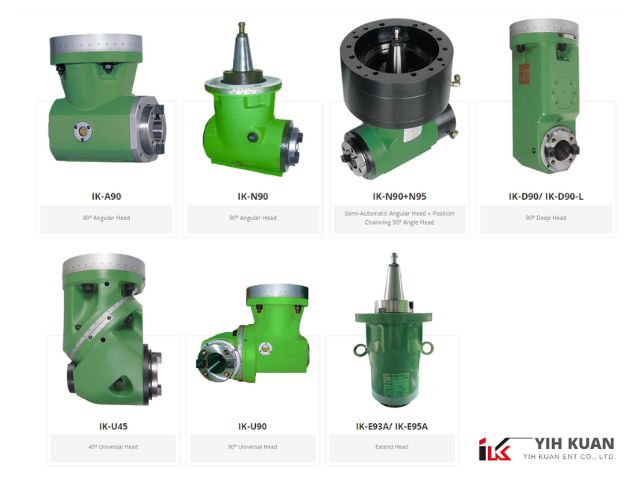Blog
What is angle heads and why it’s important?
2023.05.18

What are angle milling heads (angle heads)?
Angle milling heads are precision tools used in machining for drilling or milling in hard-to-reach places. They are attached to the spindle of the machine and they allow for the cutting tool to be angled perpendicular to the workpiece, allowing for more precise cuts in tight spaces.
Angle milling heads are commonly used in the aerospace, automotive, and medical industries where precision is of utmost importance. They come in a variety of sizes and shapes to fit different machines and applications.
The main advantage of using an angle head is the ability to access difficult or impossible-to-reach areas, which improves machining accuracy and reduces the need for multiple setups. This saves time and ultimately leads to more efficient production.
Angle milling heads can also be used to perform multiple operations with a single setup. This reduces the number of tool changes required and further enhances productivity.
Types of angle milling heads
There are different types of angle milling heads available in the market, including fixed-angle milling heads, adjustable-angle milling heads, and offset-angle milling heads. Fixed-angle milling heads have a predetermined angle, while adjustable-angle milling heads can be adjusted to various angles. Offset-angle milling heads are used to offset the cutting tool from the spindle axis, allowing for more precise cuts.
In addition, there are also right-angle milling heads and universal angle milling heads. Right-angle milling heads are typically used for vertical milling, while universal angle milling heads offer more flexibility and can be used for both horizontal and vertical milling.
Why angle milling head is important?
Overall, angle milling heads are a valuable tool for achieving high precision and efficiency in machining. With various types to choose from, manufacturers can select the ideal angle head for their application, making the process more streamlined and cost-effective.
How to repair angle milling heads?
Repairing angle milling heads is a crucial process to ensure smooth and precise operation of milling machines. As a leading manufacturer of angle heads, we understand the importance of keeping the equipment in excellent working condition, which is why we've compiled a comprehensive guide on how to repair angle milling heads.
- The first step in repairing angle milling heads is to diagnose the issue. This requires identifying the source of the problem, which could be anything from a faulty motor to a damaged spindle. Once the issue has been identified, it is crucial to disassemble the angle head to gain access to the damaged parts. It's during this step where we advise utmost care, as any mishandling of the parts could lead to further damage.
- Next, we'll need to inspect the individual components of the angle head. This includes the bearings, shank, collet, and tool holder. A close inspection will help uncover any physical damage or wear and tear that might be contributing to the problem. At this point, we also suggest cleaning all the parts thoroughly to remove any debris that may have accumulated during use.
- Once the parts have been inspected and cleaned, it's time to order any replacement parts needed for repair. We always recommend using high-quality components to ensure optimal performance and longevity of the angle head.
- After all necessary parts have been replaced, the angle head needs to be reassembled. This involves following the manufacturer's instructions carefully, ensuring the proper fit of each part. Lubrication of the bearings is critical at this stage, and we recommend using a high-quality lubricant.
- Finally, it's time to test the repaired angle head. We recommend placing it on a milling machine and testing its operation, checking for any unusual sounds or vibrations. If everything appears to be working correctly, the repair is complete.
Overall, repairing angle milling heads is a complex process that requires expertise and precision. By following these steps, we can ensure that our customers enjoy seamless operations and long-lasting performance from their angle heads.
Contact us if you have any questions about the angle milling head